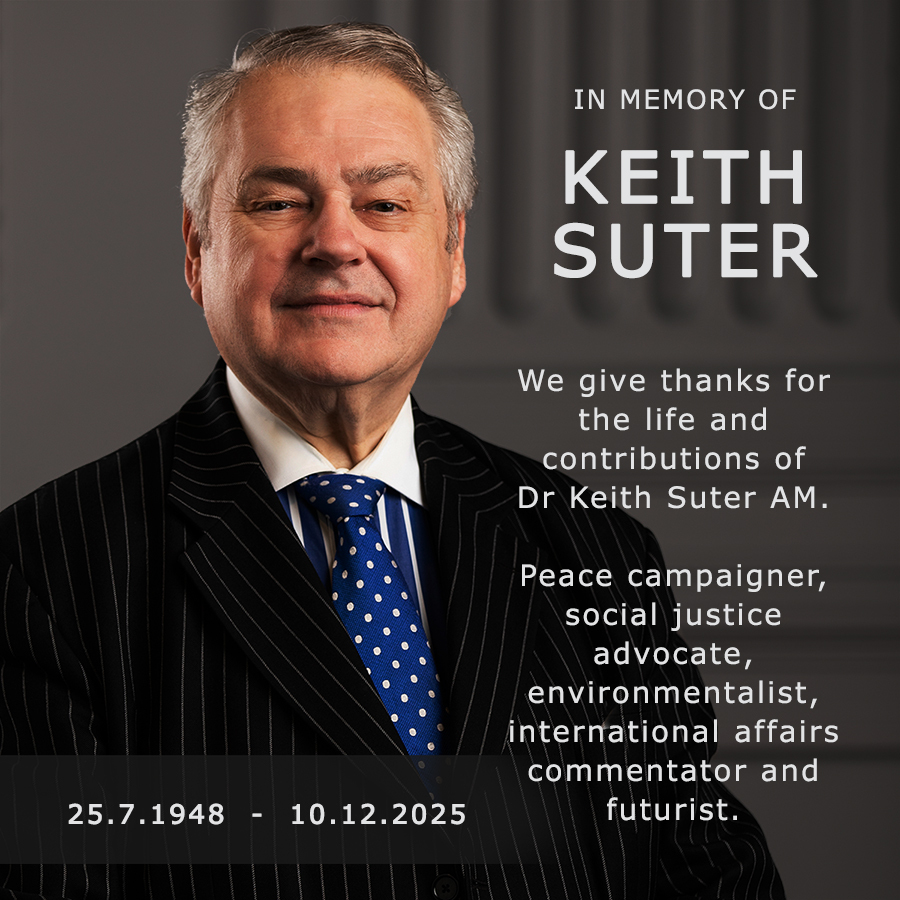
100 YEARS OF AUSTRALIAN RED CROSS AND IHL
September 29, 2014
REMARKS AT THE LAUNCHING OF THE IHL MAGAZINE
I have been asked to say a few words about my article “Negotiating the Protocols: Key IHL Work of the 1970s” and my involvement with Australian Red Cross. The theme that holds together the following four observations is that we are now living in a different world. Change remains a constant within international humanitarian law (IHL) as it does with all other aspects of life.
PhD
I was an educational disaster at school and left school aged 15. I then immediately joined the War Office in Whitehall (now Army Department in the Ministry of Defence [Mod]). I entered at the lowest possible civilian rank.
Leaving school was the beginning of my education. I found that I had an aptitude for learning. By the age of 19 I had acquired the rank of executive officer (captain equivalent in the Army) and could progress no higher for a few years because promotion was then based on seniority. I decided to try for university entry. This slips so easily off the tongue nowadays but in 1967 very people entered British universities (and indeed there were far fewer UK universities than today).
In 1969 I took unpaid leave and went to university. I expected to return to the MoD after graduation. But getting involved with IHL transformed my life.
Colonel GIAD Draper taught me international law. He was also an honorary legal advisor to British Red Cross. He had been a prosecutor at Nuremburg two decades earlier and many of the tutorials revolved around IHL. (Peter Calvocoressi, who taught me international human rights, had also been at Nuremburg).Draper encouraged me to study for a PhD and said that the process of updating the four Geneva Conventions would be an interesting field of study. Northern hemisphere PhD scholarship application deadlines had expired but Professor Martin Wight encouraged me to apply under the British Commonwealth Fellowship and Scholarship Plan to go to Australia.
There was a lot of money in Australian universities in those days (1973-6). I was able to spend much of that period researching in Geneva, Northern Ireland and Vietnam.
My dissertation examined both the politics of the updating process and to what extent the final version would be applicable in guerrilla warfare.
Geneva hosted many international conferences and the place teemed with young American PhD scholars doing field work. Most were over the road at the Palais des Nations (the UN’s European HQ) following the UN Law of the Sea negotiations. Exploiting the seabed, they thought, would be where the money was after graduation. They had little interest in IHL, which seemed a boutique international law subject at universities in the US and elsewhere.
There were only three PhD students at the Geneva Diplomatic Centre for the updating of the four Geneva Conventions. Michel Veuthey of Geneva was working with the International Committee of the Red Cross (ICRC) and has retained his involvement in one capacity or another. Allan Rosas of Finland is now a Finnish judge on the European Court of Justice.
Four decades on, IHL is an academic growth area. The interest in it is far more than could have been predicted in the 1970s. (I am not sure the seabed has turned out to be financial bonanza the American PhD students were expecting!)
The Two Additional Protocols
My PhD (and subsequent book) examined the interface between international law and international relations. The PhD and book cover an era that seems so distant.
An example is the role of Switzerland in international diplomacy. Switzerland had been a great supporter of the League of Nations in the Inter-War period. But Swiss citizens were disgusted at the League’s failure to prevent World War II (an aggrieved citizen went onto the grounds of the Palais des Nations when war began and killed all the iconic peacocks and peahens; the League no longer deserved them).
The Swiss people refused to join the new United Nations (though the UN retained the League building as its European HQ).
In 1974, the Swiss Federal Council hosted the diplomatic conference to update the Geneva Conventions. The Council had not been in the diplomatic environment for about three decades and the 1974 session contained some protocol problems.
In 1987 I was on the organizing committee for a UNESCO conference in the Ivory Coast and a Swiss diplomat said that my book – which examined the Swiss errors – had been part of the training programme for new diplomats.
The Swiss people continued until 2002 to vote in referenda to oppose joining the UN. Eventually they had to bow to the inevitable and so resentfully voted for membership.
The PhD (of about a third of a million words) and the book tried, among other things, to show how some key phrases didn’t just drop from the sky but were arrived at after much disputation(such as Additional Protocol I’s Article 1(4) reference to “colonial domination and alien occupation”). They also tried to show some of the human side of the treaty-making process. The book was therefore also a guide to how international conference diplomacy was conducted.
Australian Red Cross (ARC) Involvement
I arrived in Sydney in 1973 with a letter of introduction from Colonel Draper for ARC. ARC (NSW) was very helpful in making available copies of the ICRC publications. But IHL was not a major concern of ARC (NSW). Professor Alice Tay and I organized a few seminars but that was about it – very different from today’s extensive IHL programme.
The breakthrough came in the late 1980s with the Australian Government’s ratification of the two Additional Protocols and its desire to honour the standard provision on dissemination. Dissemination was partly outsourced to ARC. Some government money was made available for the employment of IHL officers and it was agreed that IHL committees should also be created.
I was then based in Perth and so joined the new WA IHL Committee. In January 1991 I returned to Sydney and joined the NSW IHL Committee, then chaired by Dr Stella Cornelius. Stella retired in 1994 and I took over.
Again, the attention to IHL is now far more than could ever have been predicted in the 1970s. IHL now attracts some best and brightest graduates from a flourishing range of IHL courses. ARC (NSW) has been able to attract some of the best and brightest to become IHL officers.
Working on the committee for the past two decades has been a great pleasure and a wonderful learning experience.
The Changing Nature of Warfare
The bottom line in all this attention to IHL needs to be that it makes a difference. When one looks at the changing nature of warfare, there are certainly changes but not always for the better.
My first Minister for War in 1964 was Fred Mulley MP. He had been captured at Dunkirk in 1940 and spent the rest of the war in a POW camp. The Germans honoured the then POW Geneva Convention by allowing him to study for a University of London degree (some of the books were supplied by German officers).
ICRC flew the examination papers between Germany and London. When he was liberated in 1945 he returned to England and graduated from the University of London. This all seems from bygone age.
In the new era of warfare (which prompted the updating of the 1949 Geneva Conventions), warfare tends to be internal (or non-international), rather than international. It also tends to be guerrilla rather than conventional.
The new era also challenges the standard military paradigm: the conventional army loses if it doesn’t win; the guerrillas win if they don’t lose. Guerrillas can win a conflict even if they keep losing battles – the conventional force just gets exhausted.
In a conventional war, the frontline is obvious. In a guerrilla conflict, the frontline is everywhere. IHL now has to operate in an era of complex irregular warfare.
What has not changed is the courage and commitment of ICRC and Red Cross personnel around the world. Henri Dunant would feel at home with them.
Keith Suter
September 2014

